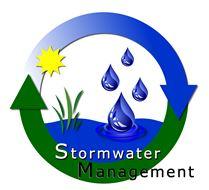What Is Stormwater?

LEARN MORE:
https://www.eriecountypa.gov/county-services/county-offices/planning-department/municipal-separate-storm-sewer-ms4.aspx for more information.
WHAT IS STORMWATER?
Stormwater is water runoff created by precipitation events, such as rainfall or snowmelt, which flows over land or impervious surfaces and does not infiltrate into the ground. Impervious surfaces include roads, parking lots, driveways, rooftops, or compacted soils such as lawns or construction sites. These surfaces do not allow stormwater to percolate through the soils below them. As the stormwater flows across these surfaces it accumulates pollutants, debris, and sediment which are then deposited into streams, rivers and lakes. These contaminates have many negative effects on our watersheds.
NON-POINT SOURCE POLLUTION
Nonpoint source (NPS) pollution, unlike pollution from industrial and sewage treatment plants, comes from many diffuse sources. NPS pollution is caused by rainfall or snowmelt moving over and through the ground. As the runoff moves, it picks up and carries away natural and human-made pollutants, finally depositing them into lakes, rivers, wetlands, coastal waters and ground waters.
Nonpoint source pollution can include:
- Excess fertilizers, herbicides and insecticides from agricultural lands and residential areas
- Oil, grease and toxic chemicals from urban runoff and energy production
- Sediment from improperly managed construction sites, crop and forest lands, and eroding streambanks
- Salt from irrigation practices and acid drainage from abandoned mines
- Bacteria and nutrients from livestock, pet wastes, and faulty septic systems
- Atmospheric deposition
- Land use changes and hydromodification or channelization of streams
PROBLEMS:
- Rivers and lakes are an important resource for drinking water. When they are polluted public health risks can increase.
- Sediment can clog pore space and damage important habitat for macroinvertebrates and other aquatic life.
- Fertilizers can cause excessive algae growth which depletes the oxygen in the water. Fish and other aquatic life need oxygen in the water to survive.
- Bacteria and other pathogens can create health risks when washed into beaches and other swimming areas.
- Debris—such as plastic bags, six-pack rings, and cigarette butts—washed into rivers can choke, suffocate, or disable ducks, fish, turtles, and birds.
- Household hazardous wastes like insecticides, pesticides, paint, solvents, and motor oil can poison aquatic life.
- Polluted water or diseased fish is a public health hazard and can spread illness to people and pets.
- A lack of infiltration and recharge causes the groundwater level to drop and will lead to wells and springs going dry.
WHAT RESIDENTS CAN DO TO HELP:
- Properly dispose of household and yard waste. When people put grass clipping in a ditch, or dump wastewater or grease into a catch-basin, this clogs the pipes, causing backups that can flood your neighborhood. Furthermore, organic waste in our waterways deposits Phosphorous, hurting wildlife and leading to harmful algal blooms and closures of our local beaches.
- Limit the amount of fertilizer added to your lawn. There are limits to how much nutrition your lawn can absorb. Follow the directions on the package, such as timing with the weather and not using too much. Excess fertilizer gets washed off of lawns and carried to streams and lakes, causing harmful algal blooms and other issues.
- Pick up and dispose of your pets waste. Domestic animals live at much higher concentrations than similar animals would in the wild, and microbes in the feces of carnivores like dogs and cats can be very harmful to aquatic health.

